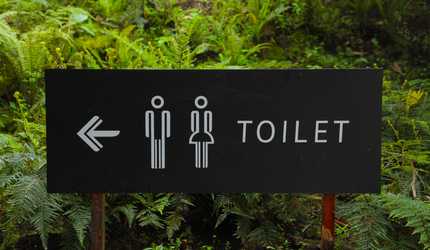How to Recover After a Marathon

Contents
Marathon runners are well acquainted with the need to prepare a training plan that steadily builds up to the golden goal of 26.2 miles. Yet, it’s quite common for many runners to ignore the importance of marathon recovery.
Covering 10-tips to recovering after a marathon; these points will show how to recover faster in the week after the event, optimising your recovery period after a marathon.
Scroll to the bottom of the article for a hour by hour marathon recovery schedule.
Listen to your body
Completing a marathon is a superhuman feat of achievement that also comes with a cost. The excessive exertion causes muscle breakdown by-products – lactic acid and creatine – that will continue for at least a week after the event.
This is because the human body isn’t meant to run so much all in one go. According to a Yale study, even the most well-trained marathon runners can expect a micro trauma to the body.
The couple of hours immediately after a race are crucial for starting the process of what to do after a marathon. Make sure you kick off the recovery process as soon as possible and try these rest and recovery strategies after a marathon.
Contrast Therapy Shower
As soon as you can after the race, you should take a long shower. The key here is to alternate between hot and cold temperatures for around 30-60 seconds at a time. This is called contrast therapy.
Consider the common parts of your body – legs and back – that need some TLC after running a marathon! Physically the body has expended large amounts of potassium, protein and oxygenated blood. A shower sharply contrasting in hot and cold temperatures encourages the replenishment of all three.
Another benefit of a contrast shower is the way it reduces DOMS (delayed onset muscle soreness). Most runners suffer the stiffness and tightness of DOMS up to 72-hours after finishing the race.
This can last for up to 5-days if not alleviated with treatments like a contrast shower and compression gear.
Compression Gear
Compression gear are said to have a twofold benefit for a runner. These types of garments can both optimise performance and aid in recovery. Wearing compression gear during the run will lessen the production of lactic acid, helping your muscles go longer, and reducing cramp afterwards.
Compression items are able to do this by reducing the vibration to the muscles. The material wraps around the muscle groups as support. By lessening movement and vibration the damage to the soft tissue is minimised.
For these reasons it is recommended to run in compression clothing, and to wear it in your immediate post-marathon recovery. In this period of very low level movement the compression works well at encouraging extra blood flow, which in turn encourages the process of flushing lactic acid out.
How Should Compression Gear Feel and Fit?
Items like socks, tights and tops are the most common items for a runner to use.
When considering the fit, the gear should be tight without making your movement restricted. Yet, not too tight otherwise it could slow circulation and become painful.
Expect around 50 or more washes before the taut material begins to slacken – at this point it’s probably worth replacing the item to keep the effectiveness.
Ice Bath Straight Away. Or not at all!
If you’ve just run a race, it’s best to have an ice bath immediately.
Olympic runner Jo Pavey explains that hot baths widen blood vessels which isn’t great for your body right after exercise.
However, if it is more than a day after the run and the pain has died down, a hot bath is better for getting blood flowing to your muscles to kickstart the healing process.
Limit Exposure to Colds and Infections
In the week after your marathon you can expect your body to be at a high risk from cold and infection.
Cold causing viruses – most commonly the rhinovirus – spread through air particles and touch. Viruses enter you through your mouth, nose and eyes.
During your marathon recovery it is advised to take the following precautions:
- Wash your hands with soap and hot water for at least 20-seconds.
- Wearing a mask is one of the most effective ways of preventing droplets, usually from a cough or sneeze infecting you.
- Regularly disinfect items you commonly handle in different environments, like your phone.
- Avoid touching your face as this is where viruses enter the body.
- Eat probiotic foods that are loaded with immune boosting good bacteria. Foods like sauerkraut, kombucha and yoghurt are your go to here.
Now is not the time to be catching a cold!
Get Good Sleep to Help With Recovery
With the marathon event completed and the arduous long training runs over, you’ll notice the extra time that’s freed up in your schedule.
For those that love their sleep this is an opportunity to squeeze in a few more Zzzs in the evening or morning. Sleep plays an integral role in combating marathon fatigue.
Deep sleep helps the body release growth hormones to stimulate the repair and growth of muscles. Taking extra sleep isn’t an indulgence or luxury in this instance, it is a key part of the recovery process.
Slipping into those lovely long waves of deep sleep isn’t easily done when you’re coming down from a super adrenaline high. So be kind when you try to get your jittering self off to sleep. One way of helping bring yourself down ready for sleep is to follow a guided meditation like this body scan by Breathworks.
Refuel
Having just run 26.2 miles your stomach is probably in a queasy state of rebellion. Your eating habits have briefly gone out of the window. You may have just filled up on gels. And your muscles are all over the place.
In that time you’ve given your immune system one of its biggest physical tests; it is now at its lowest due to the stress. On average a marathon runner will burn around 2,600 calories whilst running the distance. And your body mass will have reduced by around 10% due to dehydration. You should focus on replenishing these.
Start Light
Start with a soup to help fend off any potential sickness before moving on to a plate of carbohydrates and protein; the added bonus to soup is it also starts the process of replacing lost fluids!
A rule of thumb is to consume 500ml of liquid every hour to reverse the steep decline to dehydration. This level of hourly drinking needs to continue for a couple of days to replace what’s been lost.
Avoid Alcohol
As tempting it is to celebrate by glugging a few beers down – hold off! Alcohol interferes with the glycogen replacement that your body is crying out for after the race. To do this effectively your body needs water and carb-heavy foods to do this!
Take a break (5-7 days)
The hours it has taken to train for a marathon has up until now consumed large chunks of your week. You could say that running has become a compulsive habit over time. And stopping this habit can be difficult in the fog of the post-marathon blues.
If every muscle in your body is twitching to get back on the road, keep in mind that it can only make things better to be a little more cautious. At all costs avoid high impact weight-bearing movements during this time.
Whether you have the urge to immediately keep running or not, it’s worth considering that many physiotherapists recommend taking five to seven days off from running after the event.
What to do instead?
This isn’t a time to completely stop moving. Instead of sinking into a period of sedentary behaviour, we recommend that you try some low-impact cross-training like swimming, biking or yoga. Because you float while swimming it is a near to zero impact exercise on the muscles.
Stretching before and after a run is crucial in keeping the body conditioned and less prone to injury. Stretching and massage for post-marathon recovery are both important factors on your road to recovery.
Once you are in a prolonged state of post-marathon recovery. Take 20-minutes to stretch out the hamstrings, hip flexors, quadriceps, and calves. Continue this holistic process of stretching with a focus on the areas of chest, core, obliques and arms – focusing on one area each day.
Hold off on the massage
As recreational marathon running reached its peak globally around 2016 so too did the act of having a sports massage as part of the runners recovery.
This tried and tested method of warming up the muscles eases tiredness by improving blood flow and circulation. But, we recommend that you give it a couple of days before you get that sports massage.
Too early and you risk creating more muscle damage in the muscle recovery process. However, this doesn’t mean a gentle massage isn’t of benefit after the marathon, as it can loosen muscles and begin flushing out lactic acid that has amassed during the race.
Where the massage has its best effect is when it is used straight after a marathon as a relief mechanism. Massage is known to stimulate endorphin release, which essentially acts as a level of pain relief. With the muscles sore and fatigued this is one of the best psychological benefits of a post-marathon massage.
Restart Running Gradually
When you eventually get to your running restart day (around 7-days after the marathon) it is recommended that you make the first 3-runs short in distance and easy on the legs.
Following this you can gradually begin to increase distance, speed and time spent running.
Like the first and foremost point of ‘listening to your body’, it’s advised that you monitor how this reintroduction of running affects your body.
There is no formulaic plan here. It’s a try it and test method that will be different for everyone. The key is to pay attention to any signs of the body telling you it’s too much exertion, too soon. Each runners level of exertion will be different based on an individual’s level of physical fitness. A simple rule of thumb is to reduce distance and intensity if it starts to hurt.
Accept Post-race Blues & Plan Ahead
With your immune system in full recovery you can expect to come down with a minor bug or illness in the week after the marathon.
As mentioned, a healthy diet is the surest way to begin looking after yourself in this period. Despite the urge to want to eat junk food it’s now the time to eat the healthy nutritious options. Studies done by the University of Alabama show that maintaining a good level of Vitamin D will help keep the bugs at bay in the week after the marathon. Vitamin D can be found in foods like beef, salmon, egg yolks, mushrooms, cheese; and in drinks like milk and orange juice.
With months of intense training under your belt it is common to feel a type of post-race blues. The energy that you’ve become accustomed to using for your runs will suddenly be unused. At this point we recommend that you redirect this into something positive for your physical, emotional, and psychological needs that you now find escaping you due to not having the same running purpose and goal.
Marathon Recovery Schedule
We have taken the above advice and turned it into an easily manageable recovery schedule.
If you follow this point for point, you should be well on your way to a decent recovery from your marathon!
1-hour
- Stretch immediately after for at least 15-minutes. It is advised to keep stretches static.
- In the first hour try to get some food intake to begin to replenish what you’ve lost. Consider a nutritious plate that has the key food groups including protein, carbohydrates and vitamins.
- Begin rehydrating with up to 500ml of fluid every hour after the marathon.
3-hours
- Get into some compression gear and gently keep moving around to prevent lactic acid building up.
- Take a contrast shower or brave yourself in an ice bath.
12-hours
- Keep that fluid intake up on the hour as much as you can.
- Get another meal down you and make it a carby one!
- Take another contrast shower to ease the effect of the dreaded DOMS.
- Notice the soreness from blisters and sores, and tend to these!
- Get a good night’s sleep; use things like meditation to relax your body and mind.
3-days
- If you want to try a more vigorous sports massage now would be the time.
- A minimum of 3-days is advised before you begin any low impact cross training – swimming and cycling are good choices!
- Gentle stretching of muscle groups could be upped to something more substantial, like yoga.
7-days
- Gradually begin to ease yourself back into a running routine. Keep the pace slow and the distance short at first, gradually building up from here.





